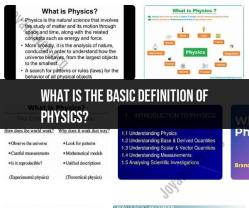What is the rate of Chang of velocity?
The rate of change of velocity is referred to as acceleration. Acceleration is a vector quantity, meaning it has both magnitude and direction. It measures how quickly an object's velocity changes over time.
Mathematically, acceleration () is defined as the rate of change of velocity () with respect to time ():
Here:
- is acceleration,
- is the change in velocity,
- is the change in time.
If the velocity of an object is changing, it is experiencing acceleration. Acceleration can occur due to changes in speed, changes in direction, or a combination of both.
If the acceleration is constant, you can use the following kinematic equation to relate initial velocity (), final velocity (), acceleration (), and time ():
This equation shows how an object's velocity changes over time when subject to constant acceleration.
Understanding the rate of change of velocity is essential in physics, particularly in the study of motion and the description of how objects move under the influence of forces.
Understanding the Rate of Change of Velocity in Physics:
1. Definition: In physics, the rate of change of velocity is commonly called acceleration. It describes how quickly an object's velocity changes in both magnitude and direction over time.
2. Contributing Factors: Several factors can contribute to variations in the rate of change of velocity (acceleration):
- Force: Application of a net force on an object causes it to accelerate in the direction of the force. Stronger forces or changes in force direction will lead to greater changes in velocity.
- Mass: An object's mass resists changes in its motion. A greater mass requires a larger force to achieve the same acceleration.
- Friction: Opposing force experienced by an object moving through a medium (air, water, etc.) can slow it down, reducing its acceleration.
- Air resistance: Similar to friction, air resistance can significantly impact the acceleration of objects moving through the air, especially at high speeds.
- Gravitational effects: The gravitational pull of a planet or other celestial body also influences an object's acceleration. This is why falling objects accelerate due to gravity's constant pull.
3. Units and Formulas:
- Units: Acceleration is measured in meters per second squared (m/s²). This signifies the change in velocity (meters per second) per unit time (seconds).
- Formulas: Depending on the context, different formulas can be used to express acceleration:
- Newton's Second Law:
a = F/m, whereais acceleration,Fis the net force applied, andmis the object's mass. - Kinematic equations: These equations relate time, displacement, velocity, and acceleration for various types of motion.
- Newton's Second Law:
Understanding the rate of change of velocity and its underlying factors is crucial in various branches of physics, from mechanics and kinematics to astrophysics and relativity.












